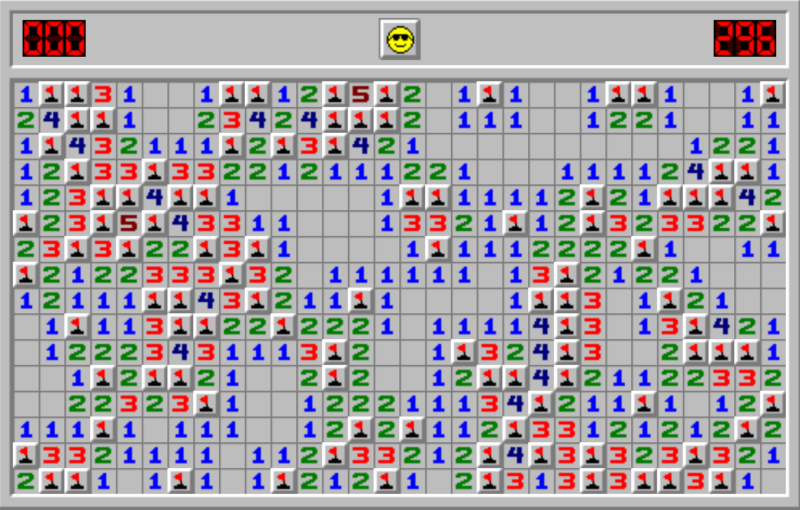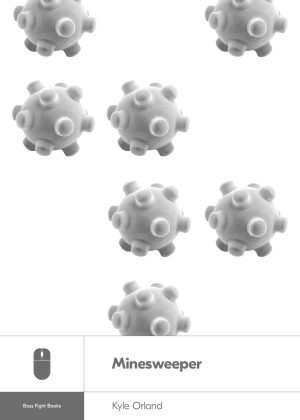
Kyle Orland's Minesweeperis now available for purchase in print and ebook formats.

The early Windows version of Minesweeper became an instant hit on Microsoft's internal network when it released in 1990, according to people who worked there at the time.
“We never had to work very hard to find testers,” said Libby Duzan Nuttall, who served as Microsoft’s lead product manager for entertainment in the '90s. “It was one of those things where you would walk down the hall and you’d see it… on people's computers. At that time at Microsoft, people were staying late into the night, so you’d see people taking breaks, 9 o’clock at night, playing a round of Minesweeper.”
“It was, needless to say, a very well-tested piece of software around Microsoft,” added Charles Fitzgerald, a product manager for the first Windows Entertainment Pack, where Minesweeper would make its public debut. But those “testers” weren’t strictly needed to refine the product, as [Minesweeper coder Robert] Donner recalled. “Whenever someone claimed to have found a bug, I asked them to send me a screenshot and then I had to point out their logic mistake.”
This was apparently a relatively common problem. Entertainment Pack Product Manager Bruce Ryan recalled getting an email from marketing colleague Mike Slade, who insisted the game’s Expert level was impossible and should be pulled. “I was like, ‘It's not impossible,’” Ryan told me. “He was like, ‘I tried it 20 times, it’s impossible.’” Ryan said he eventually had to go to Slade’s office and spend 10 minutes completing an Expert board before the marketer was convinced.
"Whenever someone claimed to have found a bug, I asked them to send me a screenshot and then I had to point out their logic mistake."Minesweeper coder Robert Donner
Even in an office full of logic-minded computer engineers, though, Minesweeper didn’t appeal to everybody at Microsoft. Of the many amateur Windows games circulating around the internal network at the time, “Minesweeper was the most polarizing,” Ryan said. “Microsoft people are fairly analytical, so they like the analytical and logical aspect of Minesweeper. But there were a lot of people who would look at it and go, ‘I don’t get this.’ There would be a lot of people who would click randomly, hit a mine and [stop]. They thought it was a guessing game.”
Hooking Bill
While Minesweeper love at Microsoft wasn’t universal, the game managed to get its hooks into the most important backer a Microsoft game could have.
“Bill got addicted,” as Fitzgerald put it bluntly.
That’s Bill Gates, of course, the billionaire Microsoft founder and CEO (though he was not yet “the richest man in the world” in 1990). Despite having money to spend on much more elaborate entertainments, in 1990, Gates found himself obsessed with dominating [Minesweeper coder Curt] Johnson and Donner’s simple Windows gaming experiment.

“Originally, I think I got a mail from Bill saying, ‘I just solved [Beginner] Minesweeper in 10 seconds. Is that good?’” Ryan recalled. “I wrote back to him, I go, ‘Yeah, 10 seconds is really good. The record for us right now I think is eight.’ (I think that was me, embarrassingly.) Apparently, the fact that the record was very close to where he was led him to make [it] his mission [to beat it].”
Ryan said Gates’ Minesweeper addiction got so bad that he “took it off his machine.” But that wasn’t enough to stop the CEO from getting his fix. “Because the high scores were [an easy-to-edit] text file, we had a rule that somebody had to put eyes on your [record] score,” Fitzgerald said. “So… it was one Sunday afternoon, and we get email from Bill saying, ‘Hey, I think I just got a new high score. It’s on the machine in [short-lived Microsoft President] Mike Hallman’s office.’ And [we were] like, ‘What?’”
Ryan recalled the surreal experience of being called in by Bill Gates on a random weekend only to cluster around another executive’s computer and confirm a new Minesweeper high score of five seconds on a Beginner board. “This was early evening. So we went over there, seven at night. [Hallman] was a former Boeing executive, and he was not a humorful guy, so… the idea that Bill is sitting there after work, going into the president’s office so he could play Minesweeper, it was just weird imagery.”
“That was when I realized how much valuable time a game could waste,” Donner said of hearing about Gates’ multi-office record chase.
Promoted Comments